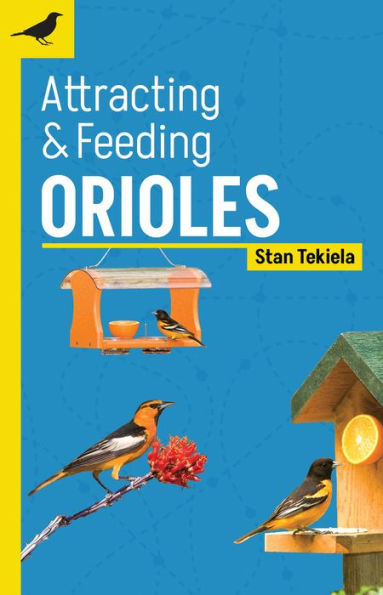Learn to attract and feed a variety of orioles with this pocket-sized guide.
The flaming orange of the male Baltimore Oriole is always splendid to see. And the oriole’s familiar series of whistle songs pleasantly reminds us that spring has arrived. You love these beloved birds, and you want to see them visiting your backyard or garden. Professional naturalist and award-winning author Stan Tekiela teaches you all that you need to know about orioles—including orchard, Bullock’s, and other oriole species.
The handy book is divided into three main sections. First, you’ll learn all about orioles: facts, range, habitat, songs, nests, and more. Up next, you’ll be introduced to the fruit and other sweet treats that keep orioles coming back. In the third section, Stan tells you which feeders orioles prefer and why. You’ll also be given information on placing feeders and cleaning feeders.
Find out how to make your yard into a habitat that orioles will love. Then enjoy Stan’s oriole photography, trivia, and quick tips. This is truly your guide to attracting and feeding orioles!
Learn to attract and feed a variety of orioles with this pocket-sized guide.
The flaming orange of the male Baltimore Oriole is always splendid to see. And the oriole’s familiar series of whistle songs pleasantly reminds us that spring has arrived. You love these beloved birds, and you want to see them visiting your backyard or garden. Professional naturalist and award-winning author Stan Tekiela teaches you all that you need to know about orioles—including orchard, Bullock’s, and other oriole species.
The handy book is divided into three main sections. First, you’ll learn all about orioles: facts, range, habitat, songs, nests, and more. Up next, you’ll be introduced to the fruit and other sweet treats that keep orioles coming back. In the third section, Stan tells you which feeders orioles prefer and why. You’ll also be given information on placing feeders and cleaning feeders.
Find out how to make your yard into a habitat that orioles will love. Then enjoy Stan’s oriole photography, trivia, and quick tips. This is truly your guide to attracting and feeding orioles!

Attracting & Feeding Orioles

Attracting & Feeding Orioles
eBook
Related collections and offers

Product Details
| ISBN-13: | 9781647553388 |
|---|---|
| Publisher: | Adventure Publications, Incorporated |
| Publication date: | 11/08/2022 |
| Series: | Backyard Bird Feeding Guides |
| Sold by: | Barnes & Noble |
| Format: | eBook |
| File size: | 23 MB |
| Note: | This product may take a few minutes to download. |
